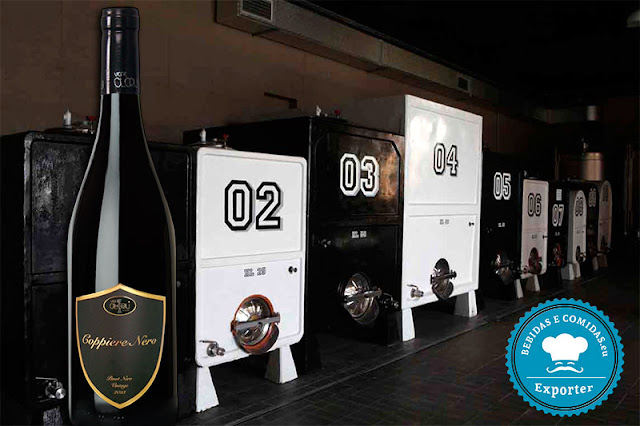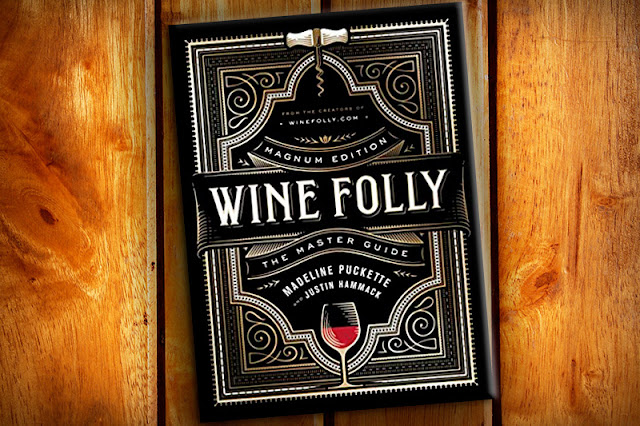Coppiere Nero - Pinot Nero
Italian red wine with 100% Pinot Noir wine grapes.
It’s a red wine with a fantastic ruby red color.Wine with hints to candied orange skin, spices, licorice, cassis, tobacco and pleasant balsamic note.
To appreciate this wine fully, we recommend to be served at one temperature between 18° to 20°C.
Enjoy it with red meat, truffles, game dishes and mature cheeses.
Grapes Variety: 100% Pinot Noir
Planting density: 5.000 vines per hectare
Training system: Guyot
Harvest: Manual in 15 kg crates
Production: About 60 q.li per hectare
Aging: 24 months in medium toasted French oak barrels
Alcohol content: 13% vol
Sulphites: 26 mg/l of SO tot (UE legal limits 160mg/l max).
Blast chilling
Once collected and placed in the crates, the grapes are placed inside a blast chilling cell and stored for 24 hours at 7 ° Celsius.This process allows maintaining the grapes intact during the pressing/treading, preserving aromas and organoleptic characteristics.
Red Vinification
The red vinification or maceration is characterized by the contact between the fermenting wort and the solid parts of the berry (skins and seeds).The grapes arrive in the winery and after a careful selection they are de-stemmed and softly crushed to preserve their integrity, then they are conveyed to fall into the tanks where the maceration will take place.
During this period, different processes are carried out to facilitate the transfer of polyphenolic substances such as: pumping over, punching and delastages. The duration of maceration and temperature will depend on the type of wine.
For wines with great structure such as pinot noir and red Oltrepò we can wait up to a few weeks, while it typically takes the bonarda 10-15 days.
Then the wines are racked by eliminating the marc and the lees produced in fermentation and depending on the productive destination they will be bottled or left in steel tanks to continue their slow evolution.
Refining barrel room
The barrel room, completely underground with controlled temperature and humidity, allows a gradual process of maturation of wines.A regular and constant weekly lees stirring (batonnage) allows the yeast to re-suspend refining the product in a more complete way.
Constant sampling and analysis allow us to regularly monitor the evolution of the wines by checking the correct aging.
Territory
The oldest human settlements in Oltrepò date back to the Neolithic period (5000-2500 BC).Through the consular roads settled the Roman Empire and after its defeat, the barbarians arrived and mingled with strains: Etruscan, Celts, Gauls, Irioligure and Latin.
The oldest Christian witness, dates back to 453 and it is the Christian tombstone of Orion.
Numerous, in Oltrepò, are the noteworthy frescoes present in different churches and chapels of important artists including: Michelino da Besozzo, Bernardino and Bartholomew Rossi also called Suardi Bramantino.
In Oltrepò there are 55 fortified places, of which 38 castles.
The territory, in the province of Pavia is 1,070 sq. km. with lowland areas below 200 meters above sea level, a large hilly area between 200 and 300 meters above sea level and an area over 350 meters, with peaks up to 1,724 meters above sea level.
The climate is mostly dry and the important temperature changes created by updrafts in mountain areas made the Oltrepò an area highly suited to the production of grapes and wine.
The soils of the low hilly area, consisting of marine sedimentary rocks with significant clay content and the higher ones of chalky origin, characterize better both the sparkling and red wines.
With a vined surface area of 13,269 hectares, the Oltrepò represents 60% of the entire vineyard area of Lombardy, while the hectolitres of wine produced, make it the third area in Italy.
The genotypes of Pinot Noir were grown in Oltrepò by the ancient Romans.
The first traces of the production of classic method, in Oltrepò, date back to 1870.
Currently the Oltrepò represents the third area in Europe for the production of Pinot Noir.
The Grapes Pinot Noir
Pinot Noir is the red wine grape of Burgundy, now adopted in wine regions all over the world. The variety's elusive charm has carried it to all manner of vineyards, from western Germany and northern Italy to Chile, South Africa, Australia and, United States and New Zealand.It takes a great deal of care and skill to make Pinot perform, and the results vary wildly from watery, acidic candy water to some of the richest, most intensely perfumed wines on Earth. This elusive perfection has earned the variety obsessive adoration from wine lovers all over the world.
The essence of Pinot Noir wine is its aroma of strawberry and cherry (fresh red cherries in lighter wines and stewed black cherries in weightier examples), underpinned in the most complex examples by hints of undergrowth (sous-bois). Well-built Pinot Noirs, particularly from warmer harvests, also exhibit notes of leather and violets, sometimes approaching the flavor spectrum of Syrah.
Although Pinot Noir earns most of its fame from its still, red, varietal wines, the variety is also a vital ingredient in the production of sparkling white wines. For these, it can be used alone (to produce blanc de noirs), but is most commonly blended with its cousin Chardonnay, and other members of the Pinot family – most obviously Pinot Meunier in Champagne and Pinot Blanc in Franciacorta.
The highly successful Pinot – Chardonnay sparkling wine blend has been adopted by regions all around the world, in Europe, the Americas, South Africa, Australia and New Zealand.
In Italy, where Pinot noir is known as Pinot Nero, it has traditionally been cultivated in South Tyrol, the Collio Goriziano, Franciacorta, Oltrepò Pavese, Veneto, Friuli and Trentino. It is also a wine grape variety planted in Tuscany.
Synonyms include: Pinot Nero, Pinot Negro, Spatburgunder, Blauburgunder.
Available for deliver worldwide in bottle with 0.75L and bottle with 1.5L.
For more information about this wine, please contact us or visit our website.
Cheers…









Comments
Post a Comment